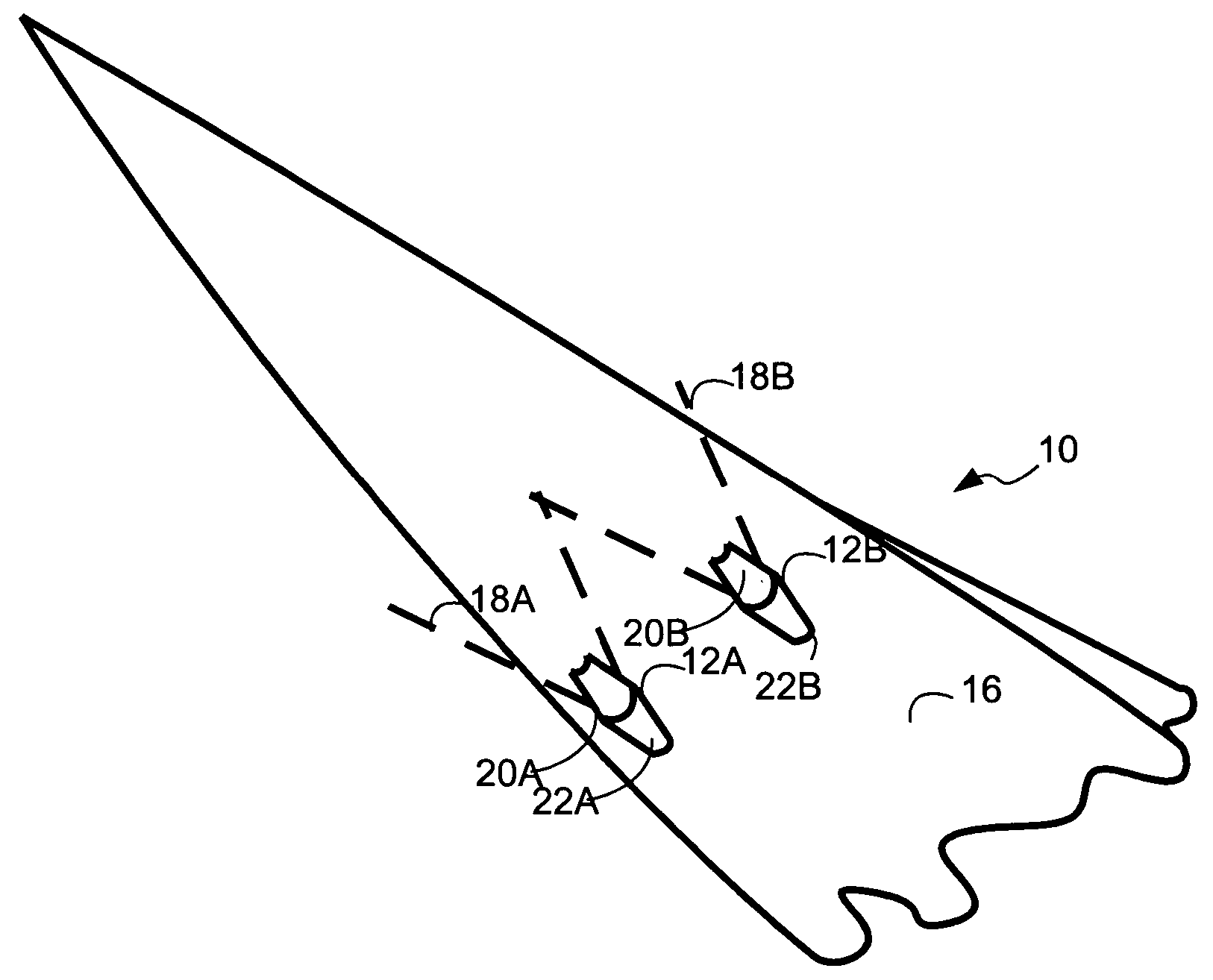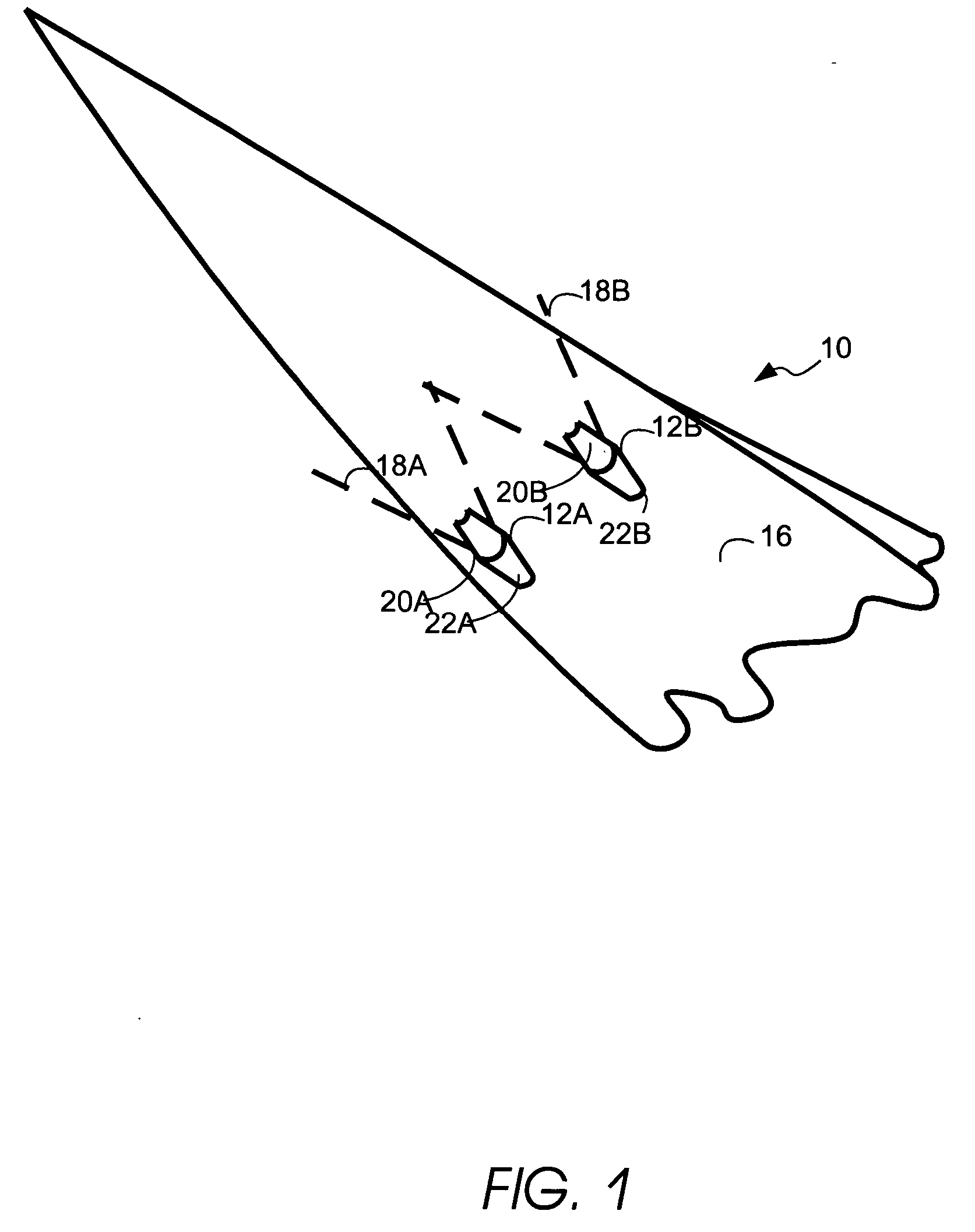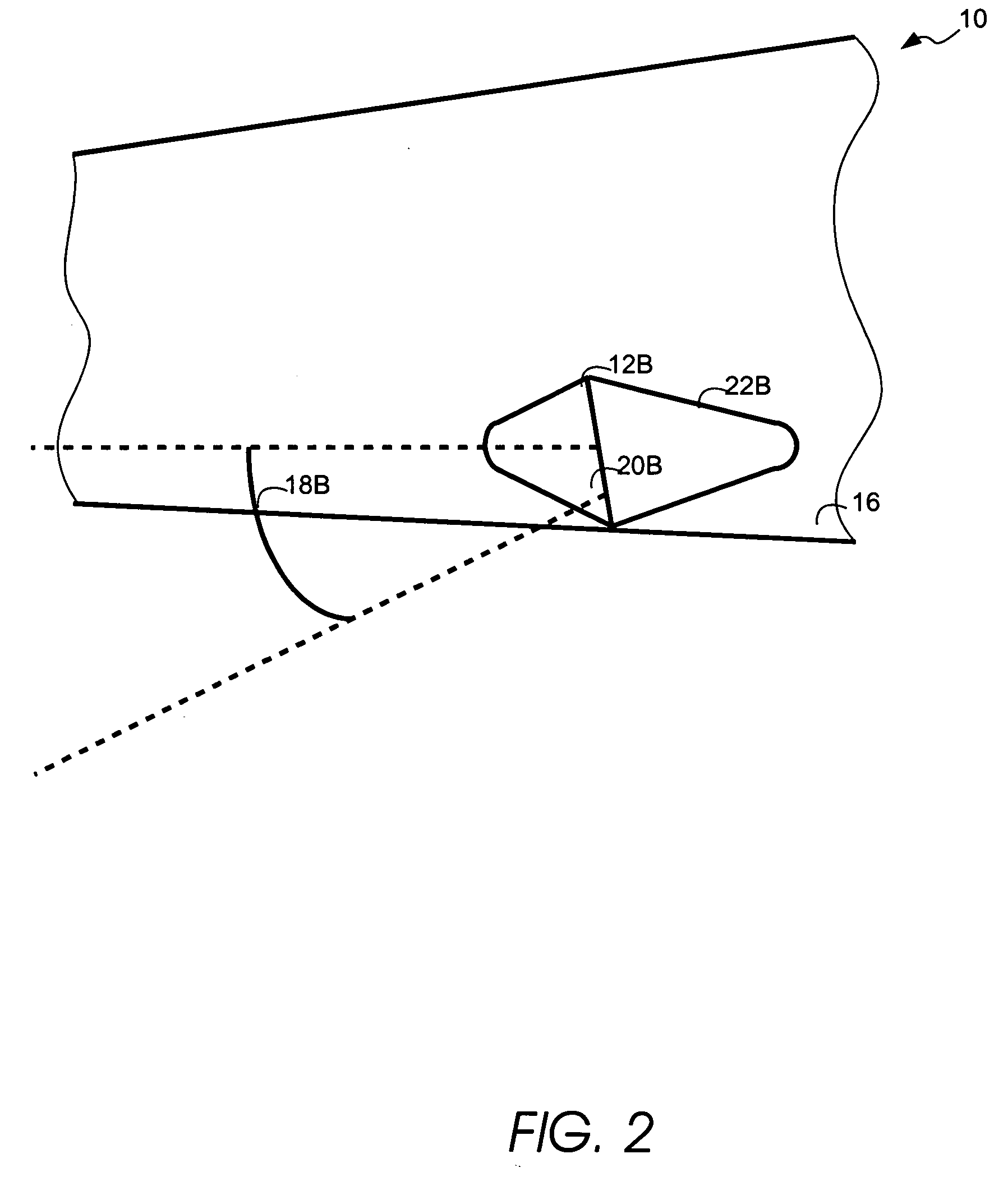System and method for mounting sensors and cleaning sensor apertures for out-the-window displays
a technology sensors, which is applied in the field of system and method for cleaning sensor apertures for out-the-window displays, can solve the problems of high angle of attack at lower speeds, inability to ensure the use of windowsowless cockpits in commercial or general use, and inability to achieve the effect of ensuring the safety of the cockpi
- Summary
- Abstract
- Description
- Claims
- Application Information
AI Technical Summary
Benefits of technology
Problems solved by technology
Method used
Image
Examples
Embodiment Construction
[0028]FIG. 1 provides an isometric view of the underside of an aircraft 10. Although FIGS. 1-4 depict a protective sensor mount used on an aircraft. This sensor mount may be used to provide out-the-window displays for devices such as aircraft, trains, boats, and other types of devices where it is useful to have visual images of scenery, traffic, obstacles, and other objects surrounding the device. As shown in FIG. 1, two protective sensor housings 12 protect sensors 14. Sensor housings 12 are mounted on lower surface 16 of the nose of aircraft 10. Each sensor provides a field of view 18 through transparent aperture 20. Fairings 22 provide a smooth continuous transition between the sensor housings and the fuselage of aircraft 10.
[0029] Similarly, FIG. 2 provides a left side view of aircraft 10 that further depicts sensor housing 12. As previously described, sensor housings 12 may be mounted on lower surface 16 of the nose of aircraft 10. The sensor contained within the housing is pr...
PUM
 Login to View More
Login to View More Abstract
Description
Claims
Application Information
 Login to View More
Login to View More - R&D
- Intellectual Property
- Life Sciences
- Materials
- Tech Scout
- Unparalleled Data Quality
- Higher Quality Content
- 60% Fewer Hallucinations
Browse by: Latest US Patents, China's latest patents, Technical Efficacy Thesaurus, Application Domain, Technology Topic, Popular Technical Reports.
© 2025 PatSnap. All rights reserved.Legal|Privacy policy|Modern Slavery Act Transparency Statement|Sitemap|About US| Contact US: help@patsnap.com



